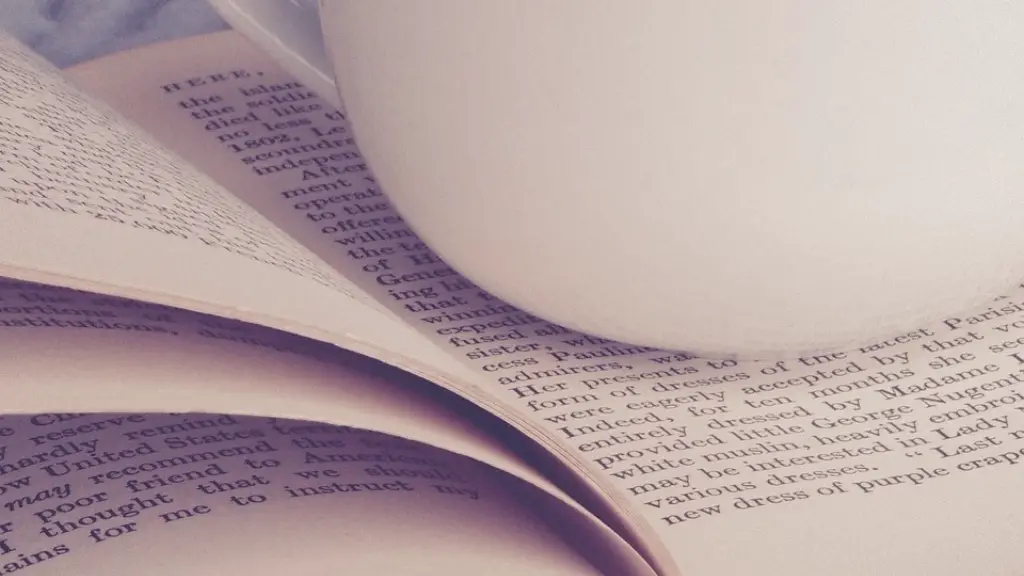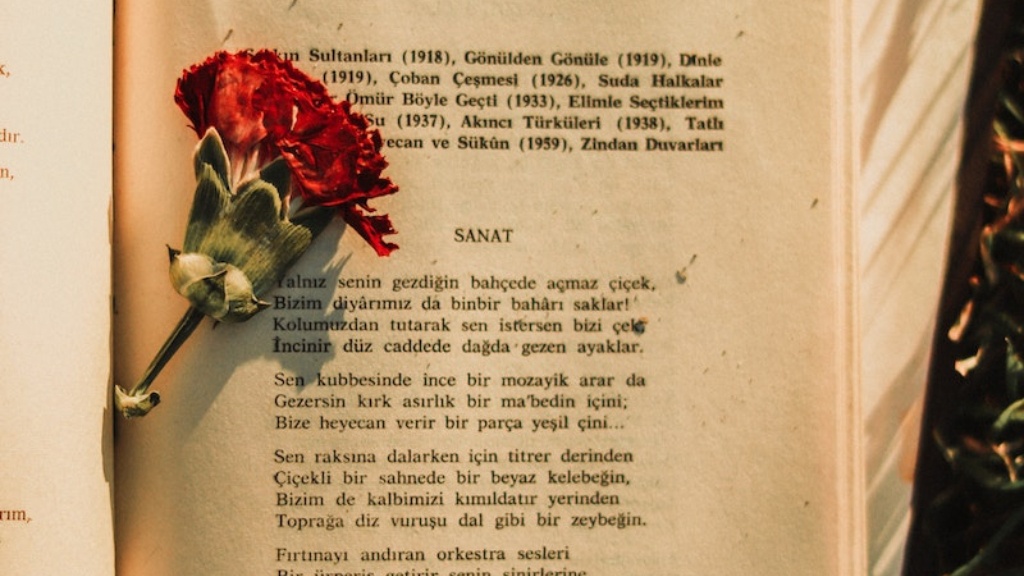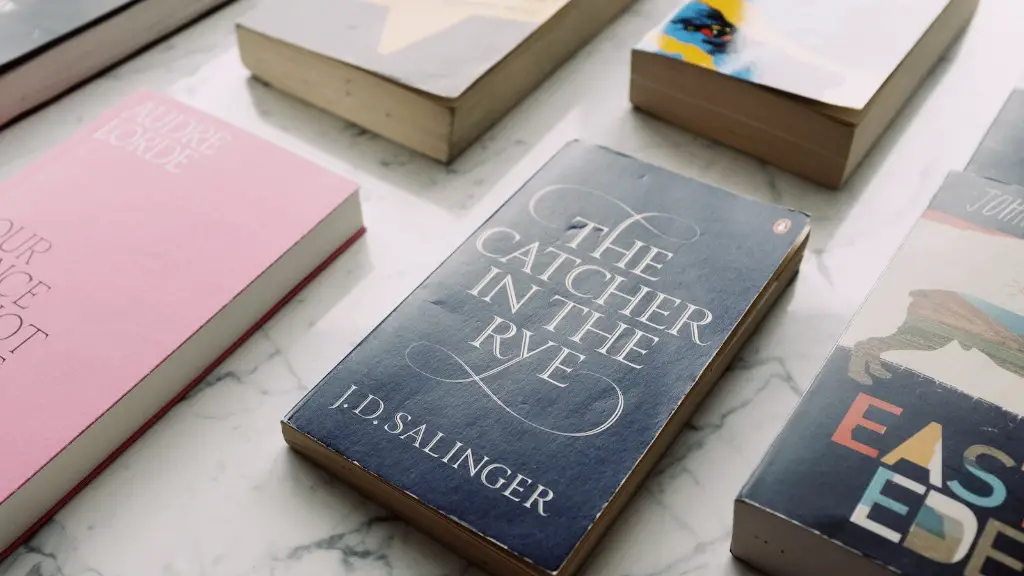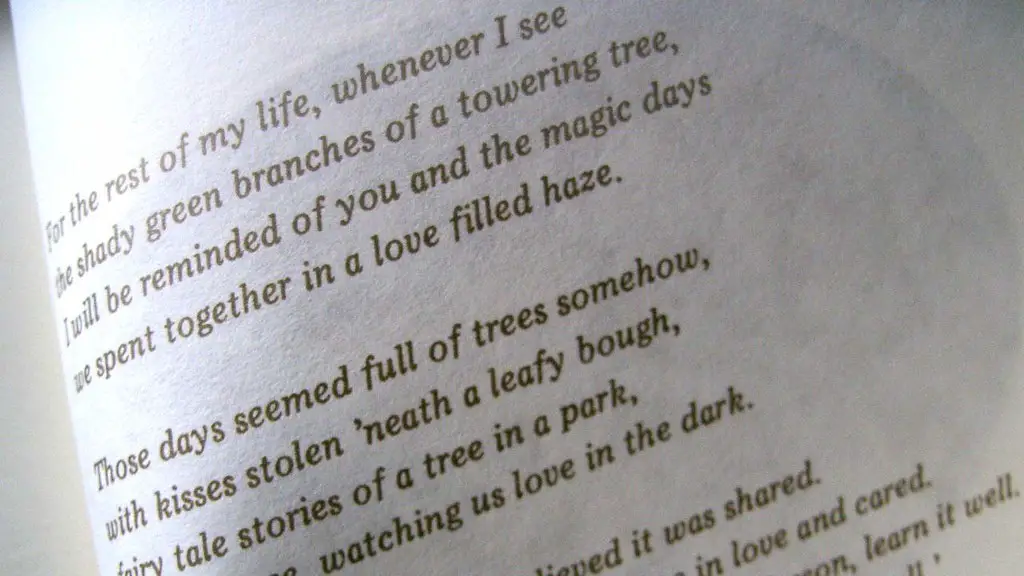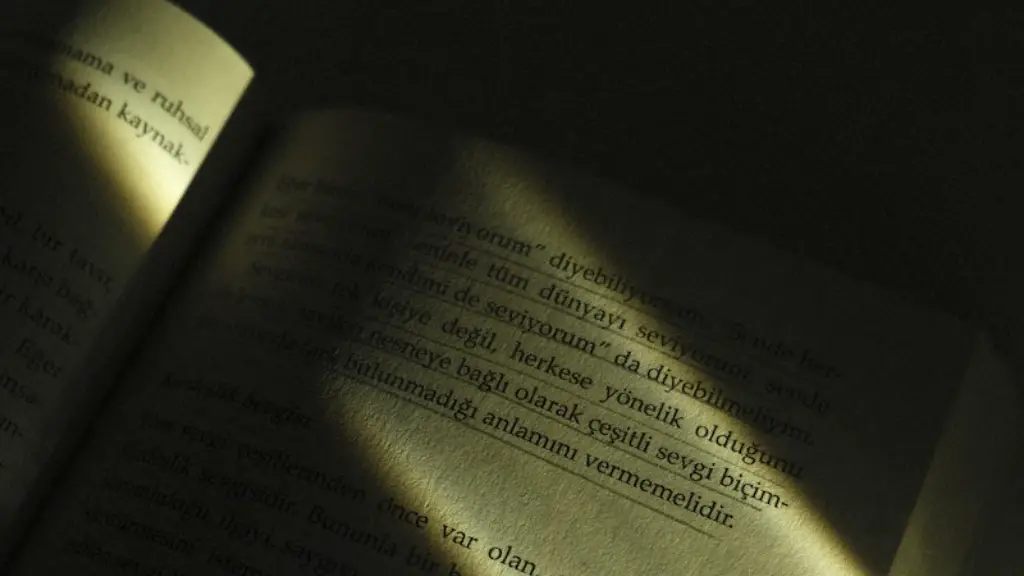People often think of poetry as an old and outdated art form, but it is still alive and well today. For a long time, poets have been using their art to express their thoughts, feelings and perspectives. Poetry is an effective way for people to convey their emotions and experiences in a succinct and powerful way. Some of the most popular and beloved poems are ones that have been written by world-famous poets such as William Wordsworth, Robert Frost, Emily Dickinson and William Blake.
One of the best ways to experience these great poems is to read them aloud. Studies have shown that reading poetry aloud can increase a person’s language abilities, as well as positively influence their non-verbal communication. Listening to the words, intonations and rhythms can also help a person comprehend the poem better. That’s why, when it comes to appreciating a poem, reading it aloud is an invaluable experience.
So what are some of the most beloved poems in the world? To help answer this question, we’ve compiled a list of some of the most popular and beloved poems from both modern and classic poets. These are some of the most recognized and respected works of poetry, and they are sure to spark creativity and inspiration in anyone who reads them.
1. “The Road Not Taken” by Robert Frost.
2. “Ode to Joy” by Friedrich Schiller.
3. “Where the Sidewalk Ends” by Shel Silverstein.
4. “Invictus” By William Ernest Henley.
5. “The Raven” by Edgar Allen Poe.
6. “Do Not Go Gentle into That Good Night” by Dylan Thomas.
7. “The Love Song of J. Alfred Prufrock” by T. S. Eliot.
8. “Sonnet 18” by William Shakespeare.
9. “If” by Rudyard Kipling.
10. “The Lady of Shallot” by Alfred Tennyson.
These poems all have something unique to offer, and for many of them, their messages can still resonate with readers today. For example, Robert Frost’s “The Road Not Taken” speaks of the life-altering decisions we face, and how the choices we make can define us. When reading this poem, readers can reflect on their own lives, and can be inspired to take a positive outlook on their future.
Moreover, poetry can provide a unique glimpse into different cultures and histories. Poems such as “Ode to Joy” by Friedrich Schiller can provide insight into 18th Century Germany, while “Invictus” by William Ernest Henley can offer readers a glimpse into 19th Century England. Both of these works remain widely celebrated due to their ability to evoke emotions in readers.
For centuries, poetry has been utilized as an effective way to express ideas and feelings. As a result, the world of poetry is filled with exceptional works that will remain timeless and beloved for generations. So, if you’re looking for some original and creative ideas, why not take the time to read these wonderful pieces of literature.
Analysis of Theme
From common lead characters to motifs of hope or despair, themes in poems can be found in almost every classic work. By examining the protagonists, settings, symbols, and common motifs, we can form a deeper understanding of these poems. For example, in “The Road Not Taken”, Robert Frost paints a vivid picture of the protagonist standing at a fork in the road, reluctant to choose one path over the other. By doing so, he conveys a universal understanding that life is full of choices, and that these choices can affect our lives in profound ways.
The poem “The Lady of Shallot” by Alfred Tennyson offers another unique theme. In this poem, the protagonist is ensnared by a magical curse, unable to look directly at the world around her yet instead forced to observe it from a mysterious tower. Through this story, Tennyson explores the idea of isolation, and how it can prevent us from experiencing the world around us.
Through their exploration of universal themes, these poems offer readers a unique glimpse into their life experiences, as well as a way to reflect on their own lives. By exploring such common ideas and human experiences through the use of poetry, these works are able to profoundly engage readers, while educating them in an entertaining and meaningful way.
Style and Structure
The beauty of a poem can often be found as much in its structure and style as in its content. For example, some poems can be read as traditional rhyming verses, with opposing lines and a specific pattern of syllables. Other poems, such as William Wordsworth’s celebrated “Lines written in early spring”, employ an irregular meter and lack the need for rhyme. Whatever the execution, the structure and style of a poem can add an extra depth to its meaning and message.
Other poems employ unique and complex structures to emphasize their meaning. For example, T. S. Eliot’s “The Love Song of J. Alfred Prufrock” is a complex and disjointed narrative, with no traditional structure or rhythmic pattern. This informal structure adds to the poem’s overall message of disconnection, and helps to reinforce its themes of separation and isolation.
Poems, by their very nature, are short and concise, enabling the poet to capture the essence of their experience within a few short lines. However, their concise nature brings a unique challenge; it is up to the poet to make the most of their few words, while still conveying their message in the most efficient and effective manner. Poets have been steadily rising to this challenge, utilizing clever and creative phrases to maximize the impact of their words.
Breakdown of Meter
When reading a poem, it is important to understand the meter of the work. Meter, or rhythm, can be defined as a repetitive pattern of stressed or unstressed syllables in a line or poem. By recognizing the meter of a poem, the reader can better appreciate its meaning and emotion. To do so, the reader must break down the poem, word by word and syllable by syllable.
The traditional meter of a poem is known as iambic meter, in which each line is composed of two syllables; an unstressed followed by a stressed syllable. Poems such as William Shakespeare’s Sonnet 18 are written in iambic meter. When read out loud, these poems will have a strong and consistent rhythm, in which the reader can stress each syllable and celebrate the beauty of the work.
Poems can also employ more irregular meters. For example, the poem “Do Not Go Gentle into That Good Night” uses an alternating pattern of iambic meter and trochee, in which each line contains a mix of stressed and unstressed syllables. By implementing a different rhythm, Dylan Thomas conveys a sense of urgency within the poem, which is necessary for its meaning.
Figurative Language
Poems can often employ figurative language, such as metaphors and similes, in order to express their message in a unique and vivid manner. By utilizing figurative language, poets are able to provide their readers with a physical and emotional image of their works. For example, in “The Love Song of J. Alfred Prufrock”, T. S. Eliot describes the titular character as a “pair of ragged claws, scuttling across the floors of silent seas”, which provides the reader with a powerful image of his isolation and his sense of displacement.
In addition, by using figurative language, poets can often express multiple layers of meaning within a single line or image. This allows readers to deepen their understanding of the poem, while making a single line of the work more powerful and meaningful. For example, Emily Dickinson’s poem “Hope is the Thing with Feathers”, which begins “Hope is the thing with feathers”, can be interpreted as a comparison between hope and a bird; both of which can take flight and soar.
Literary Elements
Another important element of poetry is the use of literary elements. Such elements are often subtle but effective ways of adding depth and emotion to a poem. For example, the use of repetition can be especially effective; by repeating certain phrases or words, poets can emphasize certain feelings or messages within their works. Furthermore, by alternating the words, they can add subtle yet strong alterations to their message.
In addition, by utilizing literary devices such as alliteration, personification and synecdoche, poets are able to create powerful images and evoke emotions within their works. For example, in Robert Frost’s “The Road Not Taken”, Frost utilizes personification to describe how the two paths were “just alike”, presenting the opportunity to “decide how [the protagonist] should analyze”. By offering this description, Frost is able to convey the difficulty of life’s decisions in a single phrase.
By using literary elements such as these, poets can create works that are not only memorable and engaging, but rounded and complete. By utilizing such techniques, poets are able to maximize the impact and emotional power of their works, and make them even more enjoyable and meaningful.
